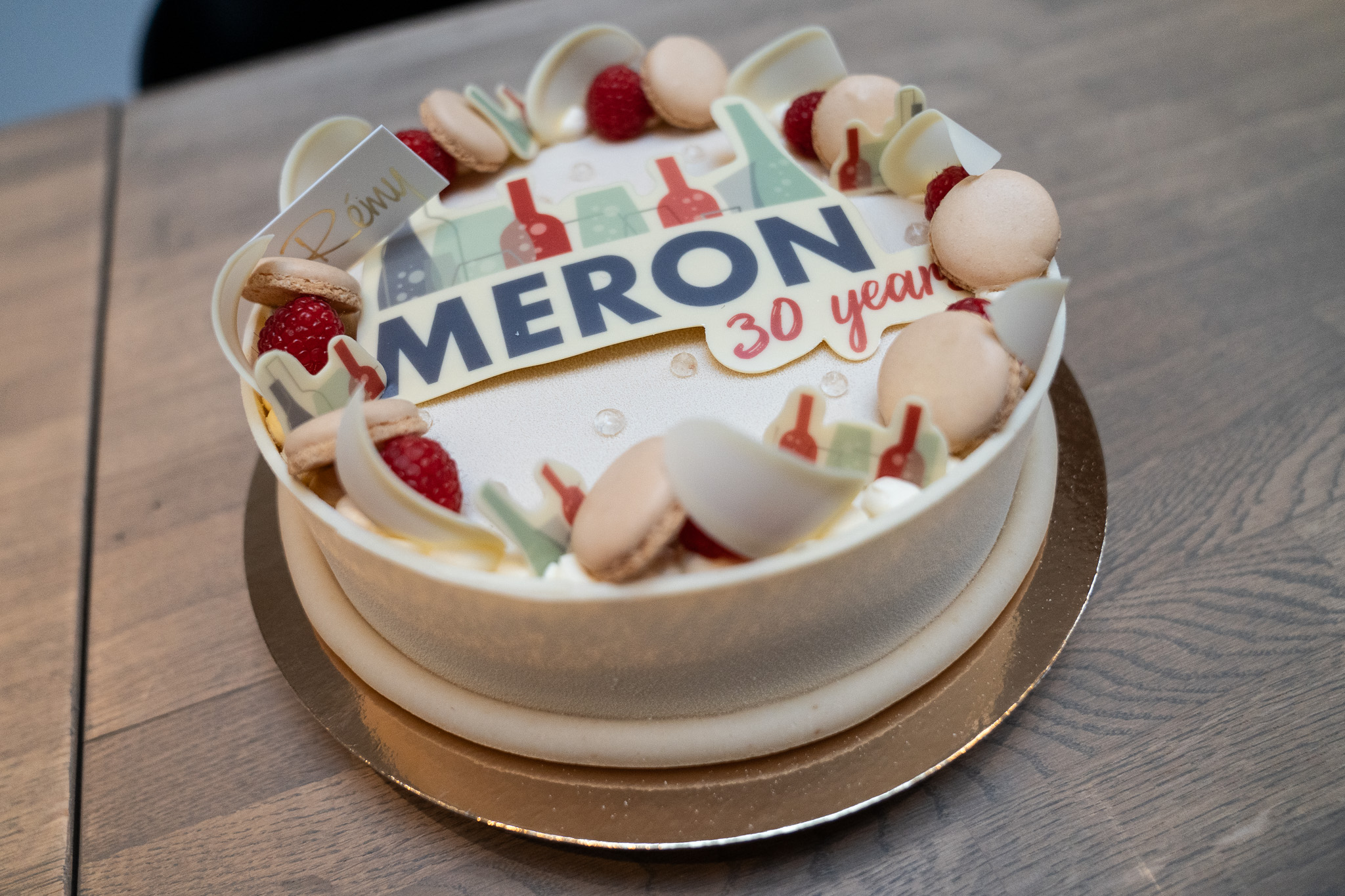Meron just turned 30! 🎉
What better time to celebrate than alongside Beaujolais Nouveau Day, the wine world symbol of new beginnings. Talking about new beginnings…

Harry and Jiska cutting the 30 years cake
Did you know Meron’s journey started on the “route du Méron” in the Loire Valley?
This was where Harry van den Dungen found the inspiration to create a company dedicated to making wine experiences be what producers want, retailers expect and ultimately a moment consumers celebrate.
Something that would guarantee with flawless precision and a human touch, that wine and spirits are a moment of joy.
Thirty years later, we are still on this journey, growing and evolving Meron to be a company equipped for the next thirty years ahead!
Yesterday was about celebrating our roots while embracing the new, with our incredible team that helps us keep pushing forward. Here’s to the next chapter and a public thank you to all our customers, and partners without whom we could not exist, develop and grow.
Let’s keep going up the “Route du Méron” together! 🥂✨

